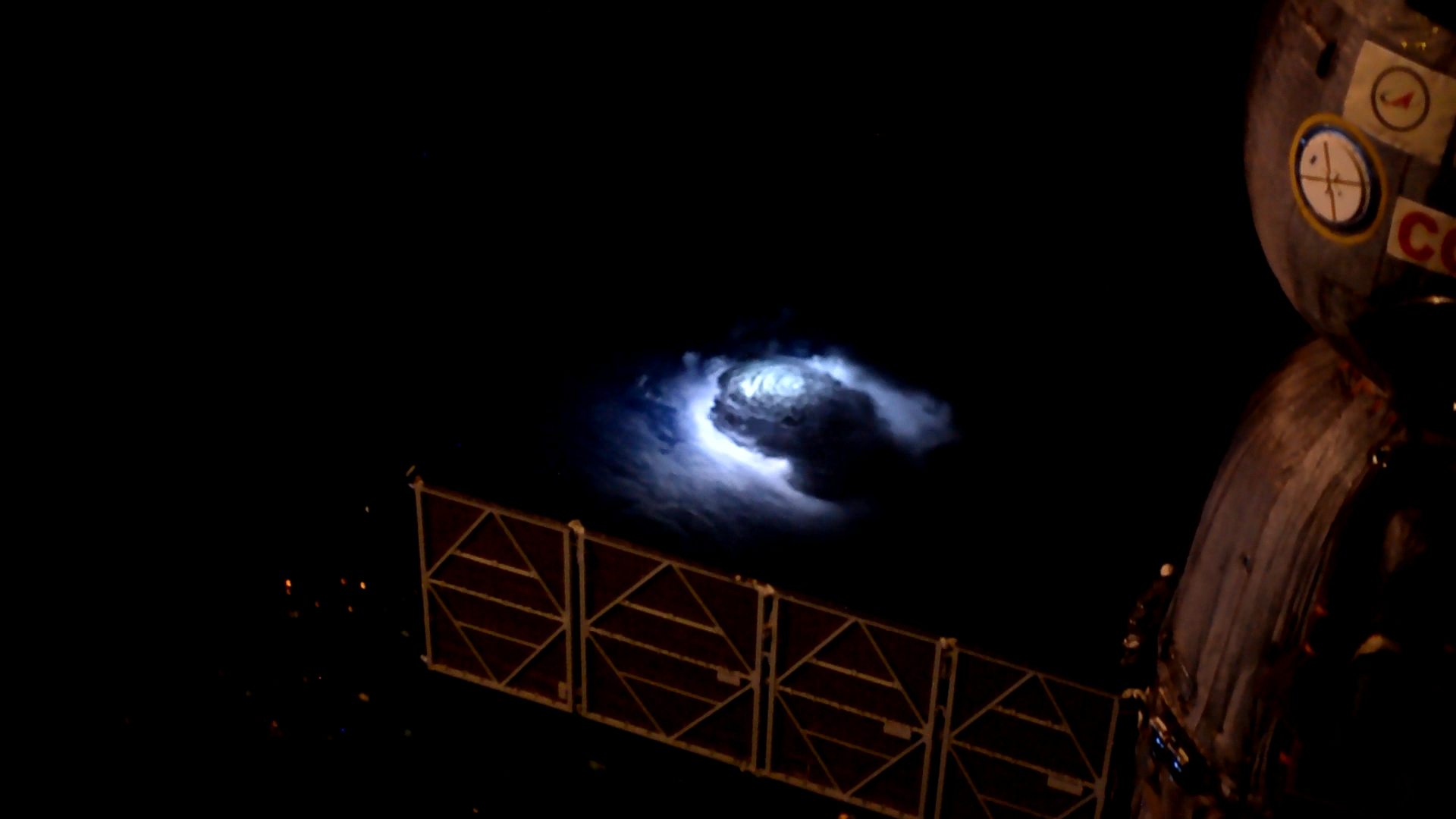Astronaut wields new space camera to see lightning strikes on Earth

An astronaut and his new camera will peer at the heart of lightning storms to learn more about their structure.
European Space Agency astronaut Andreas Mogensen plans a stormy followup to his 2015 research on the International Space Station. Newly arrived at the orbiting complex for a six-month mission, Mogensen will look once again at lightning storms on Earth. Elusive phenomena he hopes to see include "blue jets" (upside-down lightning) and "red sprites" (discharges in a layer of the Earth's atmosphere, known as the mesosphere.)
"There's still a lot to understand exactly how they form, how they develop," Mogensen told Space.com in July, prior to his Aug. 25 liftoff on SpaceX Crew-7. He added this will be "one of the more exciting studies" for the research team, as his 2015 images of blue jets made the covers of both Science and Nature, the most prestigious journals in the scientific community.
Related: SpaceX Crew-7 astronaut plans to snap aurora photos on the ISS
Lightning has been captured by cameras in space before thanks to powerful satellites, examples being the American GOES (Geostationary Operational Environmental Satellite) series and the new European Meteosat Third Generation series. But the human-led study allows for more flexibility as it's easier to retask Mogensen on the spot as storms arise, assuming he is not occupied with something that can't be moved in the schedule.
Two other things are working to Mogensen's advantage. His 2015 mission was just 10 days; this time, he's expected to stay in space for at least six months. The new camera he has with him, called a Davis camera, is a novelty as well: It captures up to 100,000 images per second based on events it sees.
The new camera, Mogensen said, "gives the scientists a way to study the formation and development of these types of lightning in much more detail. And there's still a lot to understand exactly how they form, how they develop."
Breaking space news, the latest updates on rocket launches, skywatching events and more!
The camera is neuromorphic, meaning it uses a different way of imaging than what is found in standard cameras. "Instead of taking images by collecting light through the camera shutter, the camera measures differences in light and uses that information to create an image," ESA officials wrote in a statement Thursday (Sept. 7).
"A person sitting perfectly still in a lit room would not be registered on a Davis camera, as the light does not change. If the person starts moving, a Davis camera would record the change in light and produce a video."
Olivier Chanrion, lead author of an April 2023 presentation on the study at the European Geophysical Union in Vienna and online, said peering at lightning also provides a unique view on human-induced climate change.
"The interaction between these lightning events and the upper atmosphere is not fully understood," said Chanrion in the same statement. He is also a senior researcher at DTU Space, which is Denmark's largest space research institute.
The new study, Chanrion added, provides "the opportunity to analyze and quantify their (lightning storms') impact, and to check to which extent they are associated with overshooting thunderclouds tops that inject greenhouse gases and aerosols in the stratosphere."

Elizabeth Howell (she/her), Ph.D., was a staff writer in the spaceflight channel between 2022 and 2024 specializing in Canadian space news. She was contributing writer for Space.com for 10 years from 2012 to 2024. Elizabeth's reporting includes multiple exclusives with the White House, leading world coverage about a lost-and-found space tomato on the International Space Station, witnessing five human spaceflight launches on two continents, flying parabolic, working inside a spacesuit, and participating in a simulated Mars mission. Her latest book, "Why Am I Taller?" (ECW Press, 2022) is co-written with astronaut Dave Williams.
